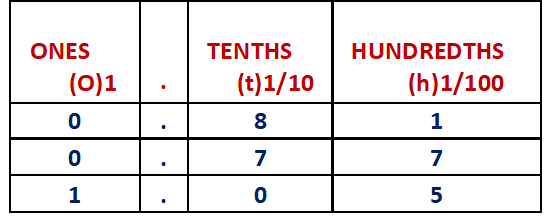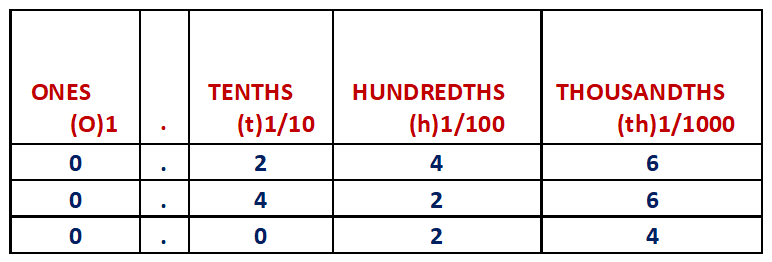LEARN MATH STEP BY STEP THROUGH VERY EASY PROCESS
CLASS-5
DECIMAL NUMBER ARRANGING IN DESCENDING ORDER
DECIMAL NUMBER ARRANGING IN DESCENDING ORDER -
To arrange decimal numbers in descending order, follow these steps:
- Start by comparing the whole number parts of the decimal numbers, if any. Arrange them in descending order based on their values. If the whole number parts are the same, proceed to the next step.
- Compare the decimal parts digit by digit from left to right. Begin with the digit immediately to the left of the decimal point. (a.) Compare the first digit among all the numbers. Arrange the numbers based on the values of their first digits in descending order.(b.) If the first digits are equal, move to the next digit to the right and compare them. Continue this process until you find a pair of digits that are different. Arrange the numbers based on the values of the digits at that position in descending order.
- If the decimal parts are equal up to the last digit, but some numbers have additional trailing zeros, treat them as equal and arrange them together. For example, if you have numbers like 2.5, 2.50, and 2.500, they would be considered the same value and arranged together.
By following these steps, you can arrange decimal numbers in descending order, considering both the whole number and decimal parts.
Example.1) Arrange the following in descending order (using > sign):
a) 0.81, 0.77, 1.05

.: 1.05 > 0.81 > 0.77
[ Since, 1 ones > 0 ones and 8 tenths > 7 tenths]
b) 0.246, 0.426, 0.024

.: 0.426 > 0.246 > 0.024
[Since, (4 tenths) > (2 tenths and 0 tenths) and 4 hundredths > 2 hundredths]